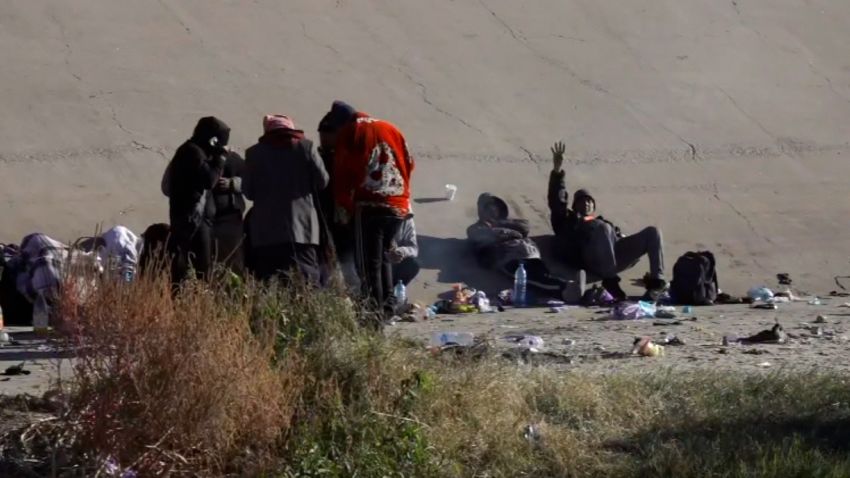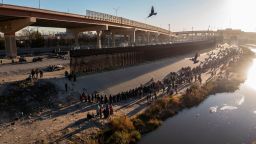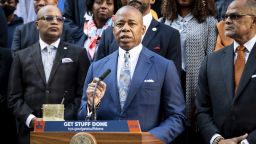As New York continues to grapple with a growing influx of asylum-seekers, two buses carrying migrants arrived in the city Sunday, with at least 10 to 15 more buses expected over the next few days, according to an email from Mayor Eric Adam’s office obtained by CNN.
The email sent Sunday to New York City Council members and staff warned the city’s shelter system is already at capacity as an increase in migrant arrivals is expected over the next few days.
The surge is expected as a Trump-era public health border policy known as Title 42 is set to end Wednesday. Invoked at the onset of the Covid-19 pandemic, Title 42 allowed officials to turn away migrants encountered at the southern border.
“Please be advised that due to the lifting of Title 42 later this week, the City is expecting a higher amount of asylum-seekers buses beginning today, with 2 buses today and 10-15 more expected in the next few days,” the email reads.
Fabien Levy, Adams’ press secretary, confirmed buses arrived in the city Sunday, but declined to say how many migrants were on board or what was specifically expected this week. He did say, “We’ve been told it’s going to ramp up this week.”
A district court struck down Title 42 last month and a federal appeals court on Friday rejected a bid by several Republican-led states to keep it in place.
New York should expect more than 1,000 additional asylum-seekers to arrive every week, the mayor said Sunday.
Since spring, thousands of asylum-seekers have been bused to the city from the southern border, often at the direction of officials – including Texas Gov. Greg Abbott – who have been critical of federal border policies.
More than 31,000 migrants have gone through the city’s migrant intake center as of December 14, and at least 21,400 are currently in the city’s homeless shelters or at four hotels operating as humanitarian emergency relief centers. The city has also opened 60 emergency shelter sites.
New York has been dealing with the crush of asylum-seekers for months, and the increase since the last budget adoption has driven a “historic surge” in the number of people living in city shelters, according to the city Comptroller’s Annual State of the City’s Economy and Finances report, released Thursday.
In October, Adams declared a state of emergency to what he called a “man-made humanitarian crisis,” saying the crowds seeking asylum were arriving faster than the city could accommodate them.
Adams has urged state and federal officials to help pay for the costs the city is facing as more migrants continue to arrive. Already, the city has spent hundreds of millions of taxpayer dollars, he said.
New York is hoping to receive $3 billion from the federal government through 2026 to help handle the flood of migrants, according to the comptroller’s report.
The report adds the federal government has not confirmed it will support New York with the annual $1 billion, but the money is needed for services to support arriving migrants and those already in shelters who need permanent housing.
Denver, Colorado, is also struggling to provide shelter for a growing number of migrant arrivals.
Denver Mayor Michael B. Hancock declared a state of emergency Thursday in response to the surge of migrants arriving from the southern border.
“With hundreds of new migrants now in Denver, and several hundred arriving in just the past few days alone, the city’s efforts to shelter them is under severe pressure due to limited space and staffing,” the mayor’s office said in a written statement.
On Sunday, 90 migrants arrived in Denver overnight, according to data released by the City and County of Denver.
Denver city services have served around 984 migrants since Dec. 9, the data shows, with 358 people sheltered in city emergency migrant shelters and another 157 people at partner emergency shelters.



